How in Leroy Merlin you can buy goods from the warehouse of a supplier who is not in the assortment of the store

In Leroy, we have many products that I would like to put on the shelves. For example, more types of wallpaper. Or professional equipment. We have materials for decorating the bedrooms, but there are no beds or bedding. Etc. 16 million people visit the site every month with a population of Russia of 146.8 million. Believe me, our customers want a lot of things, except for 40 thousand goods of the main assortment.
And here marketing comes to us and says: listen, dear developers, you are so cool and fast that you can probably gash us a platform so that different suppliers sell their goods through the site. And we completed it in delivery to our ordinary goods.
This is space. It is almost like buying a product and selling it to a customer, only without purchasing. In the sense: what the customer wants, we immediately show him the availability of the supplier, he buys, the transport company carries with our documents directly (as if it was bought from us), and if you suddenly need to return it under warranty or exchange it is done through any our store.
If successful, this is such a sharp change in the business model that you can be proud of another three years. And implement everything a couple of months. At first it seemed to us.
How does it all work?
You buy something for the bedroom from us and you want to buy unusual linen for her:
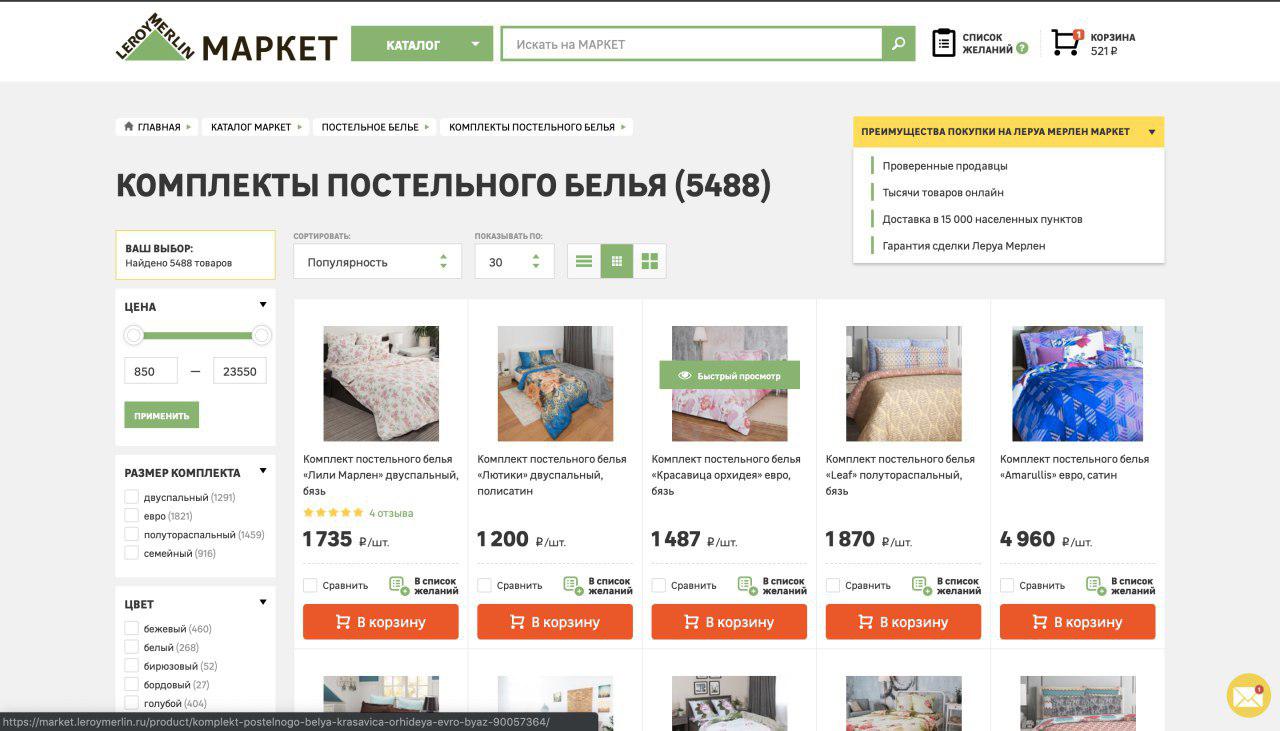
Before, we didn’t have such linen. And now, no. But you can buy it. The same applies to the same machine tools or professional vacuum cleaners. Here is equipment that rarely gets on shelves:

But construction vacuum cleaners:
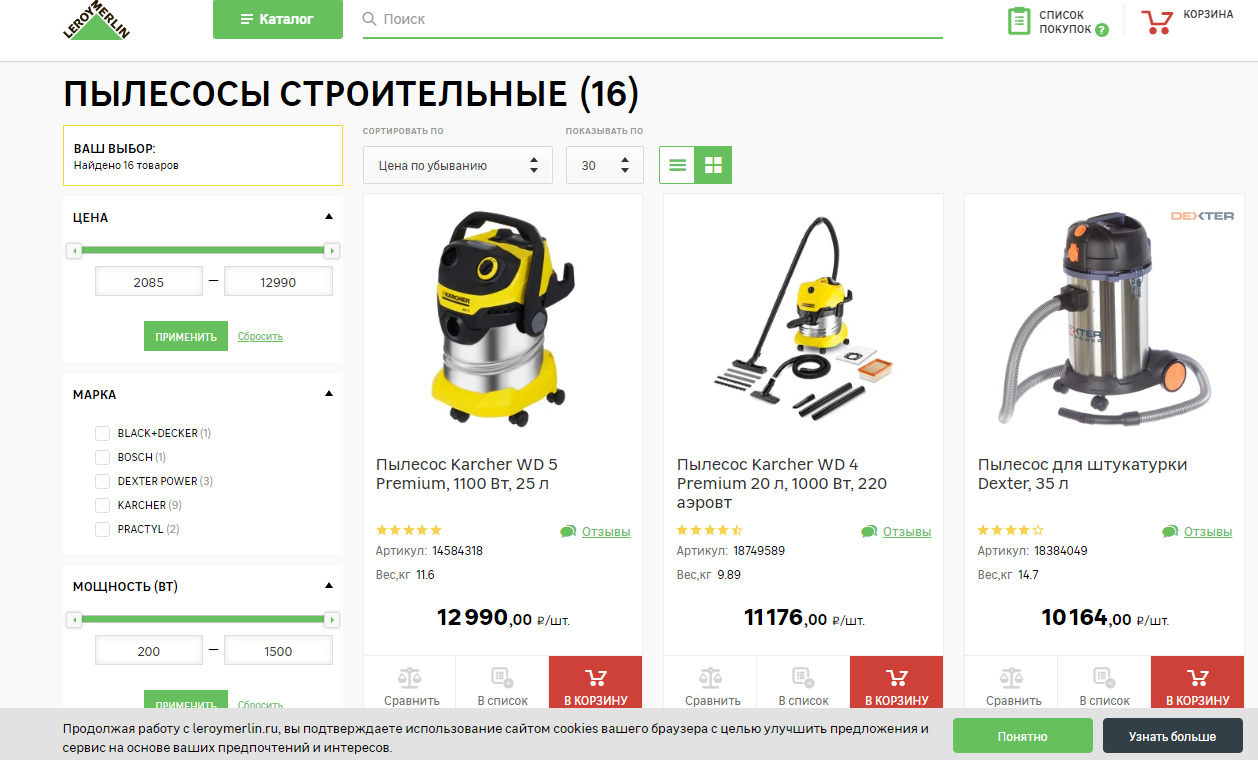
We do not put professional tools on shelves in stores, because demand is low. Nevertheless, these are single things for many cities. But small businesses have this demand, and still want to sell it. Moreover, they come to us in search of this.
Our suppliers in the product line have all the products from the examples. Most likely, we take from these suppliers pieces of the 50 best goods, despite the fact that the total range of products will be in 300-2000 positions. And we also deliver from other marketplace suppliers who do not work with us at retail.
That is, we can offer the supplier to deliver his goods to our online store, but not to ship to our warehouse.
When you buy bedding or something similar off the shelf, you are formed a separate delivery from the supplier’s warehouse. We settle accounts with the supplier - as if we are buying this product from him, we give our documents to him and send it to you. But physically the goods travel directly from the supplier.
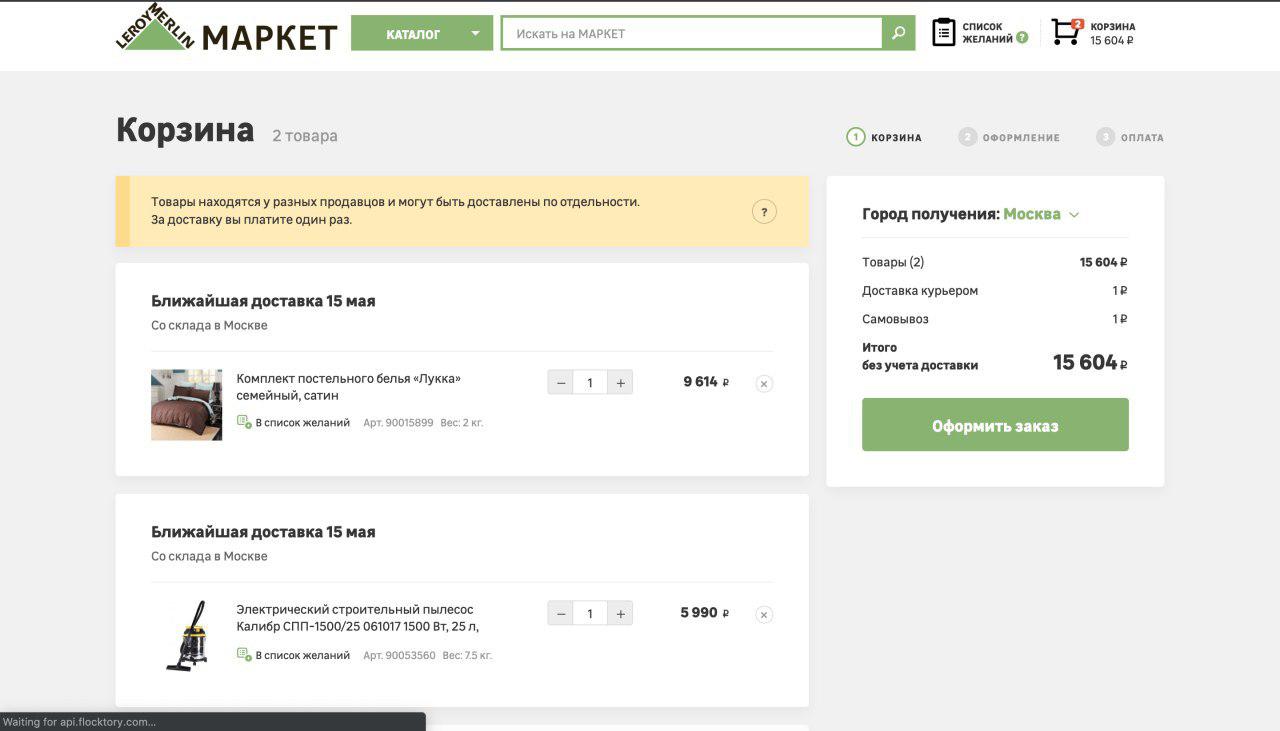
You receive the goods with documents from us.
In case of problems with the goods (breakdowns or exchange), return to us.
Then this same model was expanded to suppliers whose goods are not yet on our shelves: for example, in the regions there are a lot of individual entrepreneurs and small LLCs selling the accompanying assortment, but with them there is simply no time and opportunity to bother to conclude delivery contracts. This is a huge task for large retailers: for proper compliance with the contract when working with the network, you need to have your own department that monitors only such a contract.
The same story is needed in order to quickly test new products. Sometimes the supplier comes to us and says: but take the product XXX, it is new and wonderful. We need to evaluate it (this time), purchase, describe, execute, and so on, and if it turns out to be not very wonderful, then we will spend a lot of time and money on it.
Now such products can be tested on the marketplace. And if there is a big demand for them - immediately put it on the network. That is, we got a testing ground.
The third feature is that our procurement process is largely tied to manual processes and has a couple of rather narrow “bottlenecks”. Creating a new process architecture from scratch is a near-impossible task; you can only slowly move towards improvement. Because the load on purchases is very large. The marketplace, on the other hand, makes it possible to build a parallel process of very fast automated procurement - the way it should be in the future. After a couple of years of parallel work, you can simply switch all purchases to this corridor (with some improvements) and save an incredible amount of resources.
In general, all this had to be done. Our eyes were burning.
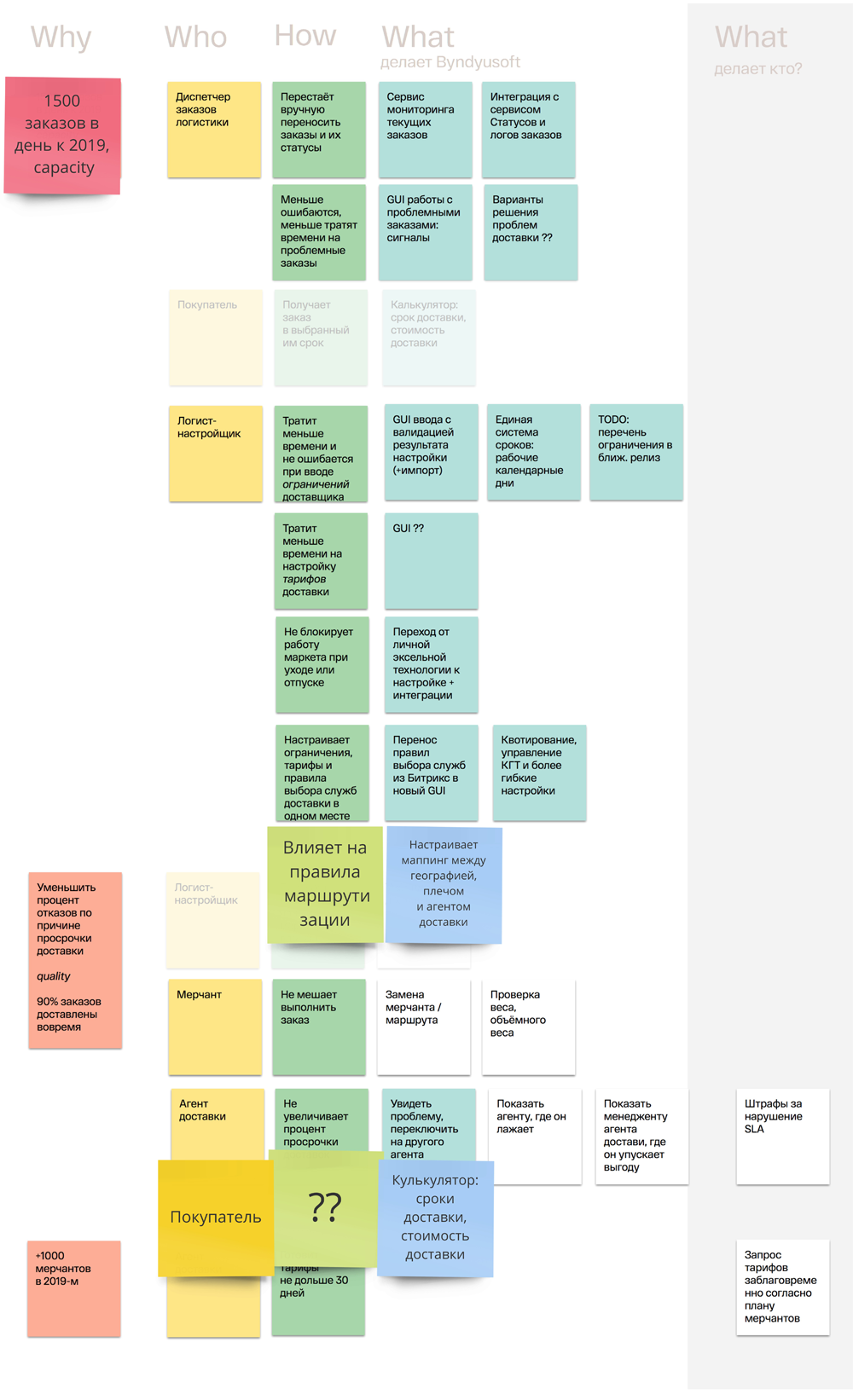
It was the tip of the iceberg
For the third reason from the list above, we decided to isolate the marketplace from the rest of Leroy Merlin's business logic in order to reduce business costs due to automation. After all, this is what the IT department in the company needs to be able to solve problems that require flexibility.
We have created a separate business unit next to traditional retail and e-commerce. We started with the materials for the decor - there are actually millions of SKUs, and they are always lacking for customers in the spirit: “Is there the same, only milder?”
They took shape as a startup inside the company, started rolling out MVP. For three months, we collected the requirements for the process and thought about how to quickly show that this is generally possible.
It turned out that almost everything had to be redone. Almost nothing of the traditional processes suited us. We needed a separate web showcase, a separate logistics management system, individual suppliers. There were a lot of conflicts of interest in choosing the assortment - for example, if you bought everything for the hallway, it seems like it is clear that the house for the cat in the hallway also needs to be sold “after” at the marketplace. But the cat itself? Cat food? No, it seems. But how to find the border?
Then it turned out that there were many local suppliers in the regions who, in order to sell well on the new channel, where it was very easy to sell quite a lot of goods, by their standards, began to lower prices. More precisely, to lower prices for analogues of our products, which are in the main assortment. And since our policy is the most affordable prices, we had to make a model for recalculating the prices of retail goods, if a player with similar goods appears in the marketplace.
In general, for about half a year we worked on MVP and did everything almost with Excel macros (in fact, no, but a lot was on crutches and a blue electrical tape). The task was to complete the requirements.
Six months later, we realized that we knew almost all the problems of this world and sat down to collect a new release - not as a startup, but as an internal priority project. A normal technological stack appeared, the thought of highload appeared, the team increased, processes appeared.
Reality and Pitfalls
Firstly, we try to combine the three parts of communication (retail, traditional e-commerce and our platform) into one common sales channel. This is called omnichannel, it looks like an extended application online. For example, as a terminal in a store where you can order wallpaper of the desired pattern, if it is not in the main assortment.
The sales assistant, of course, must know and understand this. But the problem is that he receives a bonus for sales in his store (it does not matter offline or online with delivery from his store), and he has absolutely no motivation to do something in the marketplace. Therefore, I had to sort through the business process of salary formation so that this product was also taken into account in turnover and bonus.
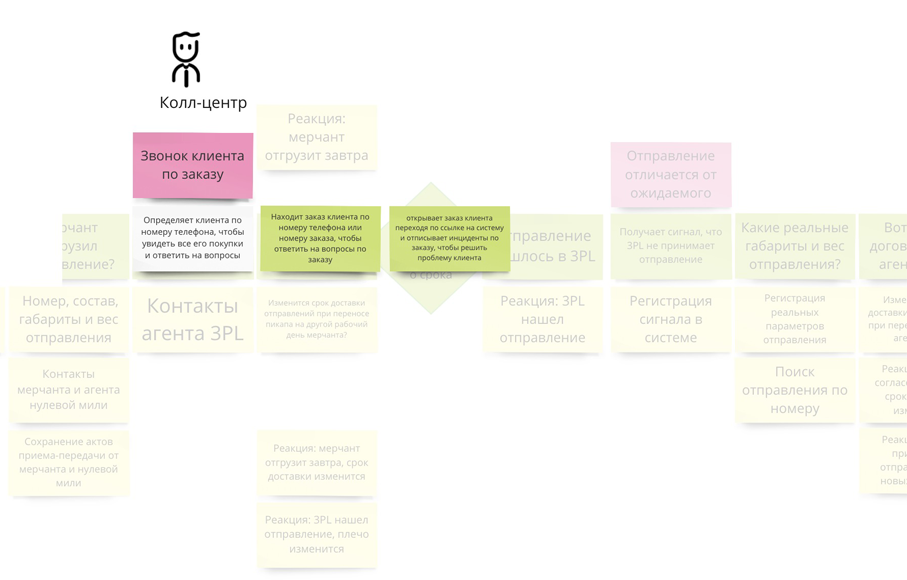
Secondly, we needed distributed external logistics.These are some services that, on our instructions, go to the supplier in the warehouse, pick up the goods there, take them to the client. We do not trust the delivery partner, because in case of possible problems there should be a second company that will pick up the order. All logisticians must comply with our service requirements, that is, at least be punctual, polite and leave the necessary documents. After all, the client does not distinguish between our products and the marketplace.
The operational part is tracking and management, distribution to partners, preparation of a document for the incoming service, tracing and control of deviations.
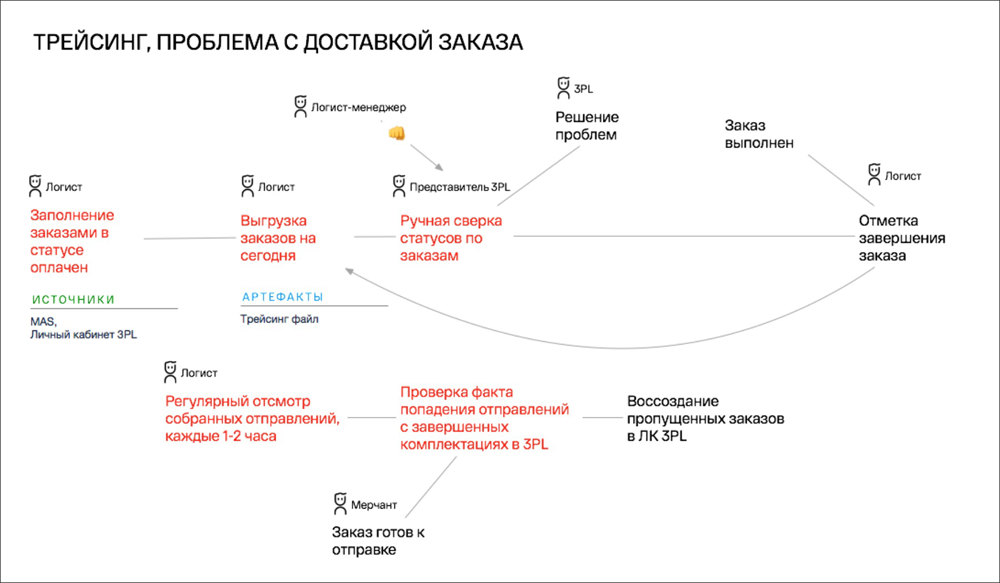
Thirdly, we needed a delivery price calculator.The calculator should answer the question of how much it costs to deliver each item. To be more precise - how much does it cost to deliver a composition of several products of known size and known weight. The number of requests for a calculator is two orders of magnitude greater than the number of actual orders, since these data are used in different informants. In particular, the client must immediately see on the product card how much it will cost with delivery.
It’s just that there is no consolidation of orders on our side from several suppliers. It is difficult that there are several logistic stories with SLA that are joined end-to-end, and at the places of these joints it always “sparks”. Our function is to orchestrate order and delivery automatically. The next step is consolidation on an intermediate hub, but this is in the plans.
The system was designed in two priorities:
- Ideally on time delivered order.
- Processed orders for the number of partners (flow rate).
An example of a problem: they counted one shipment, the logisticians came for the box, and it was of a different size. Changed the characteristics of the order "on the fly."
Fourth, the range. Question: if there are two similar goods in our assortment and in the assortment of the supplier, is it necessary to fall in price to a minimum? Yes, according to price policy Leroy Merlin in the same city - it is necessary. And if it is another city? Then, probably not: someone is ready to change the 8% discount for four days of waiting.
Another question: two suppliers brought work gloves to the marketplace. We have 40 types of them in the assortment; they added 50 more each. 10 of them are intersections, and their prices are different. Leave both? Maybe yes. The client is interested in the speed of delivery, and here she will go from different places and at different prices.
Fifth, the exchange of current stock balances and prices. Suppliers must upload this all regularly, or send requests to us if they change at home. We decided to use automatic modules to their ERP - most often it is 1C, and there are many solutions. But the difficulty is this: for the supplier to correctly maintain the 1C accounting, it needs to be more or less large. And when it is more or less large, its 1C is sometimes a mess of crutches. As a result, it turns out that each connection must be maintained. A little, but necessary. Therefore, for now, we decided to confine ourselves to medium-sized businesses in the list of suppliers in Moscow and experiment with large IPs in the regions.
Exchange of descriptions and photographs is also through the portal of suppliers: it happens that they have one product inside the same article. Then you need to go in and change the parameters, or unload the correct ones. For the time being, we are separately taking the price and availability, and separately, the characteristics and photos.
Sixth, return. To return goods to the store, you need:
- Arrange with the store that they accept returns. This means changing the training system for sellers, because, of course, not all of them understand what it is and how to work with it.
- Make verification procedures in IT systems of sellers: at first they did not know where to look at checks, and did not check the timing of returns.
- Set up financial return processes (this was relatively fast).
- Make repackaging in shipping containers because often returns are made without a box.
- Make a replacement service (another loop for delivery): we do not repair the goods in the service, but simply return them to the supplier and send a new one during the exchange. Virtually any product incident ends with a return.
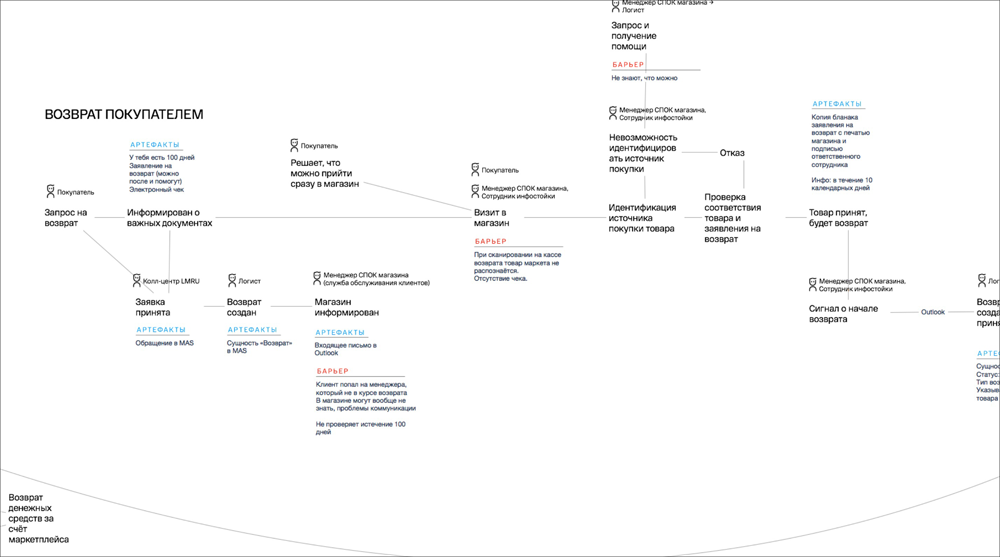
Treaties. At first we thought that we would have to look for local suppliers, but the situation was the opposite. Everyone climbs into the light and wants to go to the marketplace, because they see it as access to distribution (which is a victory for many) or as an additional sales channel. There was a difficulty in the input control. Now we have automated everything that asks for automation, but still a long legal review process remains. Why is this necessary - because if the supplier disappears, then, of course, we will solve the problem with the client, but we will get the VAT ourselves.

Now there are big plans for scoring and rating: for example, if you did not ship on time, then degraded in the stars. The issue will be affected by the accuracy of the description, price level, speed of picking and so on. The rating falls below the top three - you can refuse the supplier.
Another feature of the marketplace is the war for search engine promotion. In fact, more content is needed. And it’s difficult to demand content from suppliers. Therefore, we needed a process for product descriptions and images. We outsource photography in a studio in the regions: we offer the supplier a photo session service of his goods. He pays and receives pictures (often the first in his life for a product) - we ship them to the marketplace, in particular. Product descriptions are made in approximately the same way.
There is still work to be done on reducing the uniformity of product attributes to facilitate a search in the marketplace.
And the last important feature of the project - it was extremely important for us to coordinate in the perimeter of the legacy systems of the head Leroy Merlin (more precisely, the "parent" group of companies ADEO) in France. Because any change, testing, coordination and implementation are quite lengthy processes. Therefore, in some places we duplicated the processes in a new way. We chose the API-centric architecture on microservices, on the proto we describe all the cookies of each service, and then go (for scaling and loads) or Node.js. The base is MongoDB and PostgreSQL. Outsourcers were involved for some of the developments, and they played the hybrid team method. Outsourcing for this project is in Chelyabinsk, but 30% of the team is with us. With the success of the project, we plan to gradually reduce outsourcing resources and increase our own.
Total
A similar marketplace was launched in Brazil a little later than ours. They are smaller, and there are problems with logistics, which we immediately decided at the stage of thinking over the architecture. In France, the marketplace is older than ours, but there is, rather, a feature of the “long tail” - that belongs to Leroy, but is not located in a particular store. There, the peculiarity was that buyers trained sellers to sell from there, because they were very demanding on the product.
We made it. Everything worked. Imperfect, but we really like the story, because we rewrote a lot of the old overhead, made our own product, the product healed better than its counterparts around the world and is of practical use. The roadmap is still large, but you can already share the joy of good work. This is the same project when you know that something has changed in the world.
